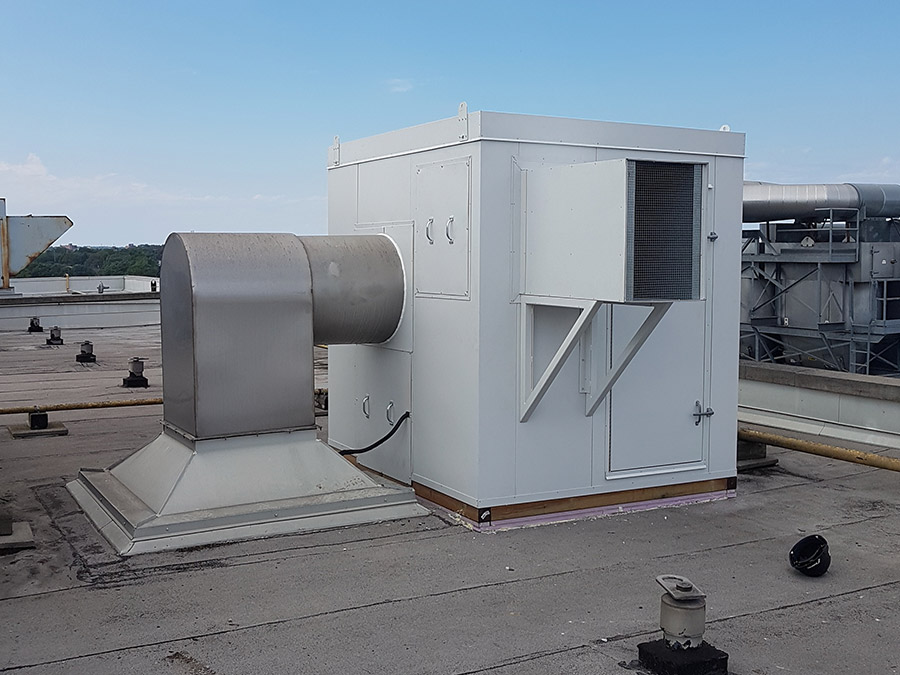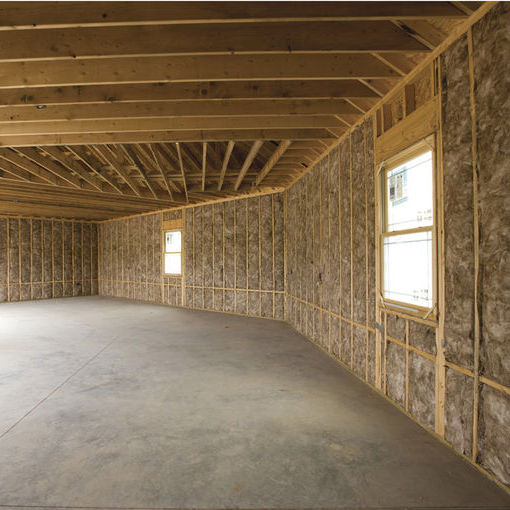Acoustic Insulation

Acoustic Insulation
Investigations have revealed that high noise conditions impairs our feeling of well being, reduces productivity, causes mental strain, fatigue, temporary deafness or nervous breakdown. Noise control is therefore a vital economic necessity and a major contribution to environmental protection.
We have been solving industrial noise problem for more than 20 years now and offers customised solutions, designed and constructed in response to any noise problem.
Our range of services includes noise control measures such as Acoustic Enclosures, Acoustic lagging of pipelines, Turbine Enclosures, Control Cabinets, Sound Absorbing Wall & Ceiling Linings, Acoustic Doors & Windows, Silencers, Air Intake and Exhaust Ducts, Acoustic Lining of Generators / Excitors / Ejectors as well as Room / Building Acoustics and Structure borne noise control.
All products – individually planned, engineered, built, delivered and installed.
Interested? Take the next step now.
Our team is here to help you with your requirements.
Request a quote now or get more info by downloading the brochure.
Applications
Acoustic Enclosures
For Gas Turbines, Steam Turbines, DG Sets, Compressors, Machinery and Mechanical Units, Motors. We build noise control enclosures both on the Modular principle or on a “Made to Measure” basis for all applications.
Control Room Cabinets
Factory assembled and shipped as an integral unit, Control Cabinets are stand alone, base mounted, weatherproof, insulated enclosures designed for working in severe outdoor locations.
Air-intake Exhaust Ducts & Silencers
Absorption Silencers with splitters-riveted or welded for use in Low/High temperature range are manufactured for various applications including Gas Turbine Inlet and Exhaust.
Room & Building Acoustics
Acoustic Wall and Ceiling absorption system, sound proof dividing walls etc. are offered for plants, offices, auditoriums, diesel engine halls, test beds etc.

More Info
Acoustics is the science of study of SOUND – its generation, propagation and finally its receipt by a listener. Unwanted sound is defined as NOISE. Noise is a result of activities such as loud talking, operation of machinery or vehicles in the neighborhood. In today`s world, noise has assumed an important area of study since it affects our way of life, our health and our psychology.
In architectural acoustics, Lloyd Insulations has handled Noise control projects and in size and complexity ranging from Aero Engine Test Beds, Automotive Engine and vehicles test cells, Enclosures for very large steam Turbines and for very noisy Gas Turbine. In these assignments, acoustical enclosures housing very noisy mechanical equipment have been treated by us to ensure that the operational areas in the immediate neighborhood experience acceptable levels of disturbance either as prescribed by codes or in line with what is optimum for the activity on the quieter side.
Control of noise, usually termed as “Noise Reduction” is the subject covered by Acoustical Engineering. Design of interiors, however falls within the area of expertise covered by the Architect and the Interior Designer. There is need for close interaction between the two disciplines to evolve technically correct & functionally sound interiors for the modern man.
Acoustical performance of enclosed spaces such as Office areas is important in that we expect the persons occupying these areas to perform efficiently for fairly long periods. High level of importance is given to ease of voice communication -whether between individuals in the same space or over of telephones, inter- communication equipment or others.
These human activities make a big demand on the nature of the environment in which they are performed. A noisy work-place is considered undesirable for mental tranquility of the occupants, quality of work and hence their Productivity. LLOYD INSULATIONS have a large range and absorption materials and systems for optimum treatment of all enclosures including auditoria.
Protecting communities from excessive outside noise arising from traffic on highways and busy city traffic requires well rounded solutions covered by an interactive process of various between engineering disciplines.
General principles of control of noise produced internally
In this section, we deal with the aspects of noises produced within the space as contrasted to those from the adjoining areas.
Any mechanical equipment or a loud talker is a highly localised source of noise. When many such sources combine together, the overall Noise Level builds up to a high “ambient”. When a person needs to communicate in this ambient, he would raise his voice instinctively. This gives rise to further increase in the ambient level and so on.
In public spaces, like airports, precise delivery of message through the P A system is possible only if the interior is treated for optimum acoustical absorption.
This is the main reason why it s very important to avoid a scenario which would promote build-up of noise level. The major culprit in building up the level is the reflectivity of the surrounding surfaces like the ceiling, walls and the floor. In addition, if furniture is constructed of hard panels (as in most cases), the situation is further aggravated.
In Industry, Zoning of noisy equipment and providing enclosures around them would prevent their contributing to the general noise buildup in a larger production or process hall. This is an aspect to be kept in mind during layout of the premises.
Provision of acoustically absorptive surfaces, particularly in the ceilings and walls is the first step in proper interior design.
In any acoustical work providing acoustical absorption economically is a necessary function.
ROCKLOYD Insulation has been engineered to provide optimum Acoustical Absorption by offering the highest “Noise Reduction Co-efficient,” to the designers and architects. They helps in judicious use of absorptive surfaces in the interior design.
Acoustics of Ventilation & Air-Conditioning system
When we talk about mechanical equipment which we deploy for tasks such as ventilation or air handling, any sound produced by them could be termed as “unwanted” and hence, requiring reduction – if not total elimination. This subject is quite diverse and it is not possible to cover all aspects briefly. However, an attempt is made here to cover the basics and open out the minds of the designers to the significant parameters that influence acoustical performance of mechanical equipment like ventilation or air-conditioning installations.
As can be readily seen, this function involves mechanical machinery, some featuring both rotating and reciprocating movements, while others handle large volumes of air through narrow passages such as ducts and deliver through restricted areas of cross sections such as grilles to produce aerodynamic noise.
All these elements are potential areas of Noise Generation. Acoustical treatment steps are totally dependent on study of these specific subjects scientifically.
A significant area concerns duct silencing where free flow of air is to be permitted while trapping noise at source. It would be important to know where & why – silencers are to be deployed.
Duct silencers are frequently applied in air-conditioning systems at the intake or discharge of system fans to reduce or eliminate fan noise on the return and supply sides. Silencers may also be required after branch takeoffs or elbows, after pressure reducing valves, and after mixing boxes. In short, silencers allow movement or air as the Air-conditioning Engineer may want but, act as traps to cut off unwanted noise transmission through duct passages. Today, packaged duct silencers incorporating ROCKLOYD are capable of performing to the precise degree demanded by the user while working within specified parameters of space and pressure loss.
Performance of requirement of silencing equipment can be calculated, after an acoustic design criterion has been set, for each noise generator in an Air Conditioning system.
Silencers used in HVAC systems belong to the family of “dissipative” silencers which predominantly rely on absorption in a “straight through” device. In all cases, these silencers incorporate a fairly low resistance air flow channel duly lined with ROCKLOYD acoustical absorptive material having precise specific airflow resistance, the parameter that determines silencer efficiency.
While designing dedicated silencers to perform noise attenuation in ducts, what we look for are:
High acoustical efficiency vis-a-vis space occupied – All dimensions are important in building design and there is high premium on compactness.
High acoustical efficiency with least resistance to flow i.e. with least pressure drop encountered in passage. If the silencer offers too high a resistance, the air supply fans may have to be oversized with higher Power consumption.
Sound rugged construction ensuring long service life without any deterioration/corrosion. This is important since most silencers are not accessible once the work is completed. In addition, silencers should be so constructed as to prevent dislodgment of particles of acoustical medium itself during use.
Often, it is mistakenly believed that an ad-hoc provision made in the duct system is more than adequate to handle the acoustical duty.
Review has shown that such an approach has always resulted in a very expensive post treatment.
Step-by-step selection procedures are to be adopted to ensure acoustical and aerodynamic adequacy.
Lloyd Insulations specialise in precise design of Acoustical systems to meet any duty requirement. With very large capacity for many plants distributed across the country and with the dedicated fabrication plant located at Baddi, H.P to manufacture enclosures, Silences and lived ducts, We provide economical solutions for every duty.
It is to be realised that it is important to remove annoyances that may be caused by noise – whether by the activities within the space or due to the provision of Air-conditioning and Ventilation Systems which are essentially provided for improving comfort conditions to the occupants of an enclosure and to improve Productivity. At times, the equipment deployed for the purpose of providing comfort to one set of persons may, in effect cause disturbance to the neighboring persons. Conscious design of equipment and careful design of noise control provisions would render the installations acceptable for the entire community.
Some of Acoustic Job references are…
Force Motors Limited
Bajaj Auto Limited
Bajaj Tempo Limited
Larsen & Taubro Ltd
Reliance Engineering Associates Pvt. Ltd.
The Automotive Research Ass. Of India (ARAI)
Beckay Engineering Corporation
Tata Power Ltd
Reliance Industries Limited
Hazira LNG Pvt. Ltd. and many more…
Lloyd Traffic Noise Barrier System
Barrier design for traffic noise attention (control) requires a number of concurrent requirements such as robustness in construction, to withstand all external forces including wind loads, ability to resist environmental exposure conditions, aesthetics, proof against pilferage and vandalism and highest level of cost effectiveness.
Needless to state all these can be built is to the system through a “tailor made” design featuring an interdisciplinary design approach.


